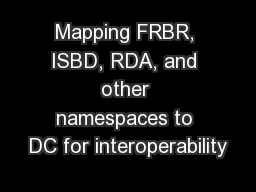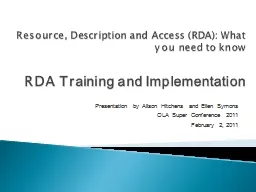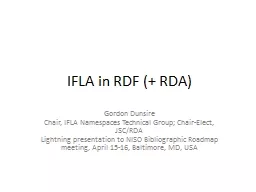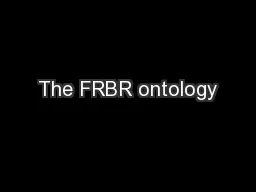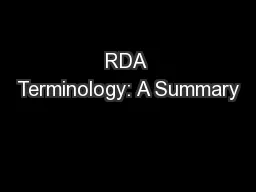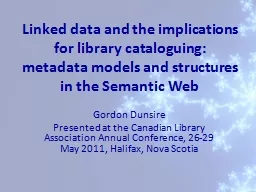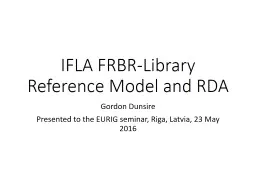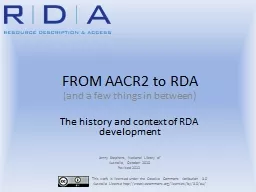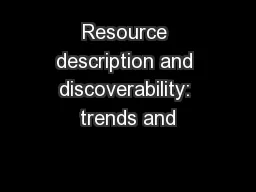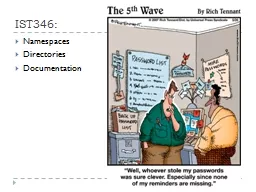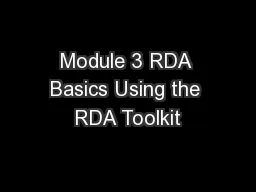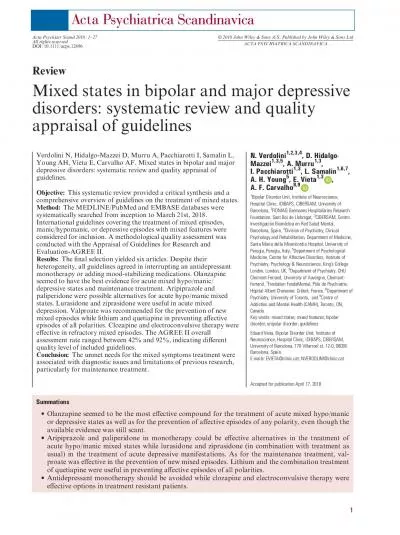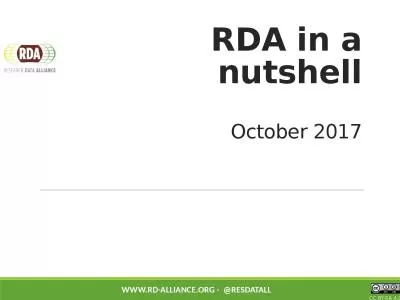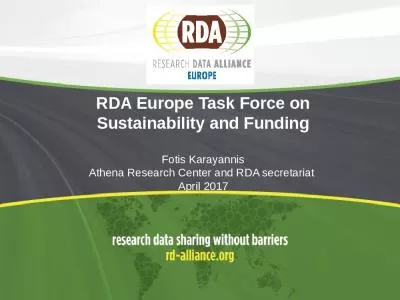PPT-Mapping FRBR, ISBD, RDA, and other namespaces to DC for interoperability
Author : alexa-scheidler | Published Date : 2018-11-05
Gordon Dunsire Presented at Kunnskapsorganisasjonsdagene 2013 78 February 2013 Oslo Norway Overview Dublin Core origins and intention to be model for subsequent
Presentation Embed Code
Download Presentation
Download Presentation The PPT/PDF document "Mapping FRBR, ISBD, RDA, and other names..." is the property of its rightful owner. Permission is granted to download and print the materials on this website for personal, non-commercial use only, and to display it on your personal computer provided you do not modify the materials and that you retain all copyright notices contained in the materials. By downloading content from our website, you accept the terms of this agreement.
Mapping FRBR, ISBD, RDA, and other namespaces to DC for interoperability: Transcript
Download Rules Of Document
"Mapping FRBR, ISBD, RDA, and other namespaces to DC for interoperability"The content belongs to its owner. You may download and print it for personal use, without modification, and keep all copyright notices. By downloading, you agree to these terms.
Related Documents

